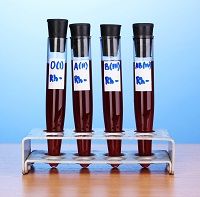Publication
Article
Hemophilia Reports
Analysis of Current Challenges Facing Hemophilia Patients and Physicians
Author(s):
Researchers examine the current issues facing hemophilia patients and physicians and potential solutions to the issues in the quarterly journal Blood Transfusion.

Hemophilia patients generally have highly effective and safe treatments despite challenges in medication administration, according to findings published in the quarterly journal Blood Transfusion. Researchers from the Regional Reference Centre for Bleeding Disorders, Federico II University Hospital, in Naples, Italy reviewed the issues facing hemophilia patients and physicians in order to shed light on what improvements are possible.
First prophylaxis versus on demand treatment of hemophilia and determined prophylaxis was significantly better, especially in the treatment of children with severe hemophilia. The children showed lower bleeding rates and better joint outcomes and quality of life when treated with prophylaxis in several large cohort studies. However, the authors noted the lack of formal studies which compare clinical outcomes do not allow for the definition of optimal prophylaxis regimens. The researchers noted that many studies demonstrate that even when prophylaxis is started early in adolescence or adulthood, benefits are seen in reducing joint bleeding rates and improvements to quality of life. Oftentimes in clinical practice, prophylaxis regiments are implemented and later adjusted by dose or frequency based on patient specific factors like expected physical activity, the musculoskeletal system status, or family needs.
“Although clinical objectives are clearly different, the choice and the personalization of prophylaxis regimens are crucial for achieving and maintaining the best patient outcomes and, in particular, improvements of quality of life, irrespective of age,” wrote the authors.
Hemophilia treatment centers benefit from having multidisciplinary teams, which include hemophilia physicians, nurses, psychologists, social workers, laboratory specialists, orthopedic surgeons, physiotherapists, and specialists in rehabilitation, hepatologists, and infectious disease, the researchers acknowledged. These comprehensive care centers can improve clinical outcomes and patient life expectancy, and has been demonstrated not only in developing countries but higher income areas as well. But because of the boost in life expectancy, hemophilia patients are increasingly experiencing age related comorbidities. Some of these comorbidities call for medications which may affect the stability of hemophilia drugs, which require detailed management of specific prophylactic regimens.
“Even ‘typical’ hemophilia related comorbidities or complications should be confronted in the evolving perspective of the prolonged life expectancy of patients,” the authors note.
Central venous access devices (CVAD) are an optimal treatment for children beginning prophylaxis, though specific training for caregivers is needed. Another issue the researchers noted with CVADs are that infections and other complications are still a major worry. The proposal of arteriovenous fistula (AVF) treatment could be newer or safer, but would be difficult in very young children, such as less than 2 years of age. Peripherally inserted central venous catheters (PICC) are also being explored for pediatric treatment, though various obstacles make them undesirable.
Lastly, the authors examined ways current research aims to overcome the challenges facing hemophilia patients and physicians. Plasma derived concentrates appear a good alternative, though recombinant products have been preferred for safety reasons especially in children. The increasing availability of modified factor VIII and IX molecules with longer half lives present good news for developing countries who cannot afford to treat hemophilia intravenously, which contributes to treatments’ non adherence there.
“Prophylaxis is the milestone of this pathway of continuous advances in the management of hemophilic patients, driven by the achievement of the best possible long-term quality of life and always requiring shared decisions between physicians, patients and their families,” the authors concluded. “Improving clinical outcomes and quality of life are key objectives even in the challenging management of inhibitor patients — searching for the optimal induction of immune tolerance or prophylaxis regimens – and of comorbidities in elderly hemophiliacs.”



